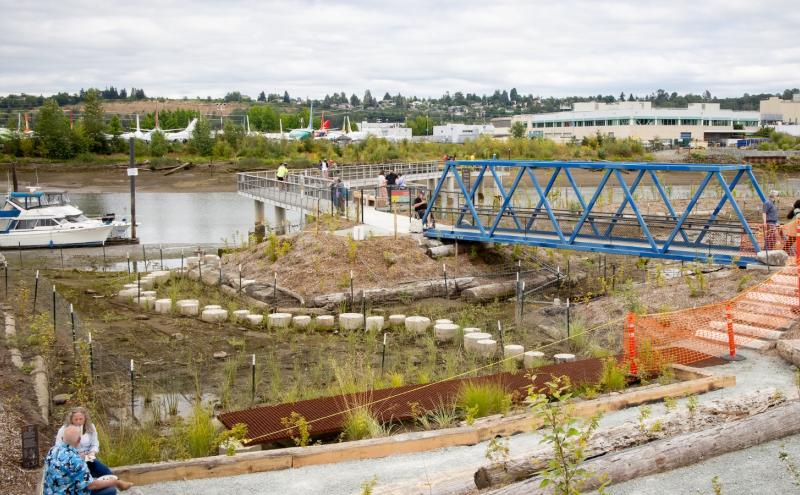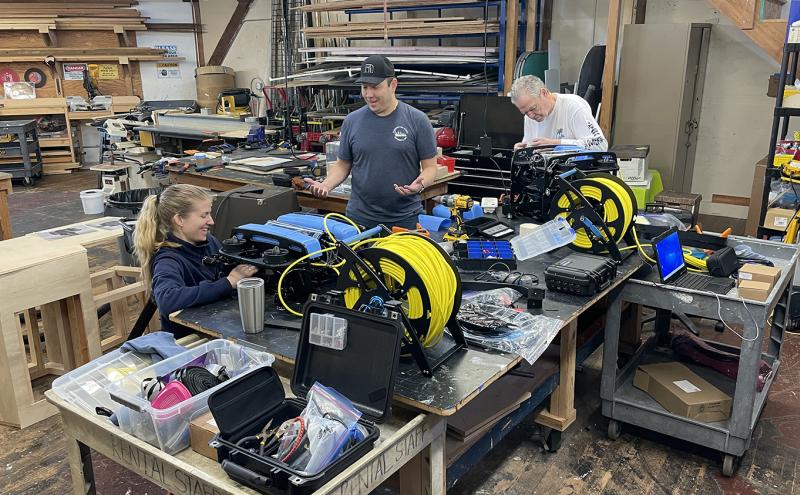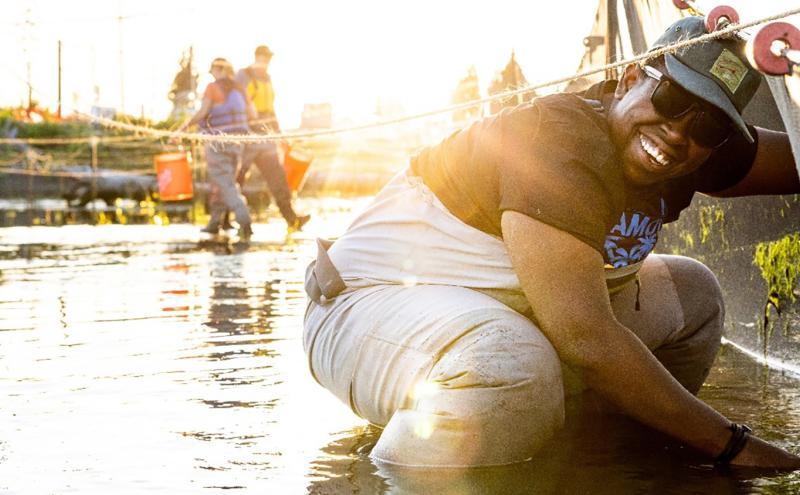
By Ashley Townes, Washington Sea Grant Keystone Fellow
Before the Port of Seattle’s newest park was named Duwamish River People’s Park (DRPP), the previously industrial site was known as Terminal 117. The property was formerly home to Duwamish Manufacturing Company and Malarkey Asphalt Company, which made roof shingles for 56 years, starting in 1937. When the companies stopped operations, they left behind polluted soil that contained oil and industrial chemicals (e.g., PCBs). In 1999, the Port of Seattle bought the land and teamed up with the City of Seattle to clean it up and make it a good home for animals and native plants.
After many years of planning and collaboration with Duwamish Valley locals, the Muckleshoot Indian Tribe and the Suquamish Tribe, and state and federal agencies the vision for the Duwamish River People’s Park (DRPP) has become a reality. This July marked the first anniversary of DRPP's successful completion, representing the largest ecological restoration effort along the Duwamish River in a century. Additionally, this year, DRPP has been named a finalist for the International Association of Ports and Harbors (IAPH) Sustainability Awards.
DRPP is 14 acres with a shoreline of 2,500 feet. It's a symphony of ecological renewal, pockets of shallow subtidal areas, mudflats, and marsh buffers. This project shows a nature-based restoration approach, highlighting the combination of natural elements, including:
- Large wood
- Compost
- Coir fabric
- Boulders
- Native vegetation
These components work in harmony to restore ecological function, increase diverse fish and wildlife habitats, and maintain an environmental balance.
Marshes — once plentiful in the Duwamish River — have now become the stuff of legends due to industrialization, leaving only one percent of the original wetlands. However, DRPP is in the estuarine transition zone of the Duwamish Waterway, acting as a sort of salmon haven, where young salmon find their sea legs before braving deeper waters.
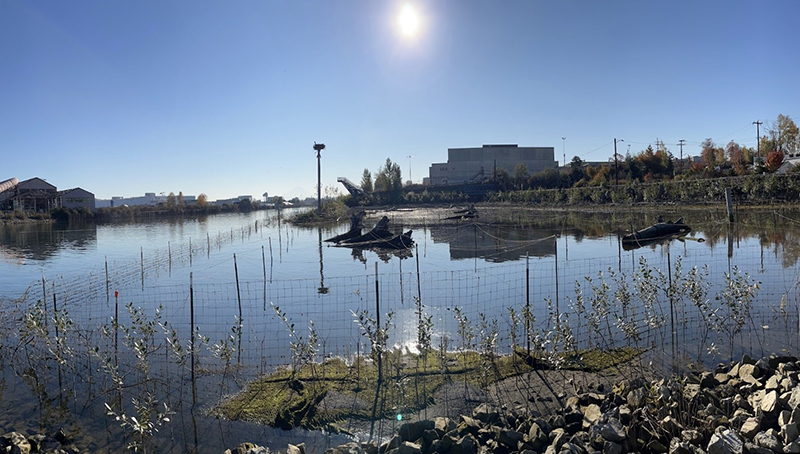
These waters hold cultural significance as well, with Tribal fishers exercising their Treaty Fishing Rights during the annual salmon migration season. Preserving this waterway and honoring the land and practices of the indigenous cultures is a priority for the Port of Seattle. DRPP gives the community the opportunity to intimately engage with the space and learn about the region’s history.
Port environmental staff continue to monitor the new habitats and have just completed the first season of fish monitoring in 2023. Keep reading to discover what we found out.
What motivates the Port to invest in fish monitoring?
The answer is simple yet powerful. Think of it this way — keeping an eye on our rivers is like giving it a regular check-up at the doctor's. Just like doctors help us stay healthy, we're like the doctors for the fish in our waters. Instead of the fish coming to us, we dive into their world to make sure everything's okay. The Port of Seattle and its partners do this by counting different types of fish, taking their measurements, and understanding where they move and live. This information not only protects the fish but also impacts the entire food chain, with Southern Resident orcas loving chinook salmon as a vital part of their diet.
How do we survey fish?
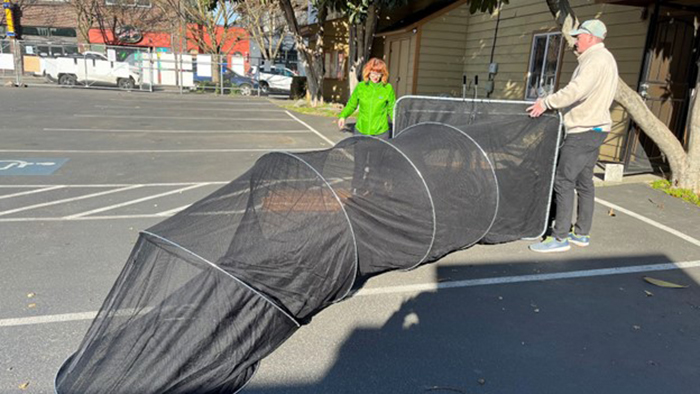
Many standard techniques have been developed to monitor fish populations effectively and provide an up-close look at fish communities:
- Gillnetting — a wall of netting hangs in the water column
- Beach seining — pulling a net along the shore
- Electrofishing — using electricity to catch fish
- Acoustic sampling methods have changed the game by using sound waves to track fish
- And then there are tools like underwater cameras and remotely operated vehicles (ROVs) that show us what fish are up to and how they behave by recording underwater videos
One traditional yet widely accepted method stands out —fyke netting. A fyke net is usually operated in shallow waters, between 9 to 19 feet deep, to catch fish. The net is cone-shaped, and the size of the opening varies between 16 and 19 feet for the net opening, and 49 to 98 feet in length. The Port has chosen this approach and applied it at DRPP. This technique involves placing round nets at the entrance of the high marsh area, designed to gently lead fish into a safe capture area within the net. As part of the Port's 10-year monitoring plan, fyke netting will happen three times during the annual fish migration season.
The Port is working with the University of Washington and King County to gain information about fish activity at DRPP and to support salmon recovery efforts. The University of Washington uses both beach seines and acoustic cameras, while King County uses Passive Integrated Transponder (PIT) tags — commonly referred to as PIT tags. These PIT tags contain the same technology as the microchips used in dogs and cats to track fish movement, survival, and growth over time.
After catching the fish, we closely examine and figure out the type of salmon and carefully decide if they come from hatcheries (aka fish farms). For other types of fish that are not salmon, we identify them by their group. An important part of this process is placing the captured fish in buckets with an aerator that provides them with oxygen to keep the water temperature at a safe level. The goal is to observe fish while causing them the least possible harm and ensuring accurate population assessment.
As the restored area keeps evolving, the information we gather from using fyke nets to catch fish becomes valuable for understanding how well the restoration is going. This information is important for people who want to protect nature and for scientists too. It supports them in making smart choices to keep these ecosystems thriving for a long time.
Are fish finding homes in DRPP's marsh habitat?
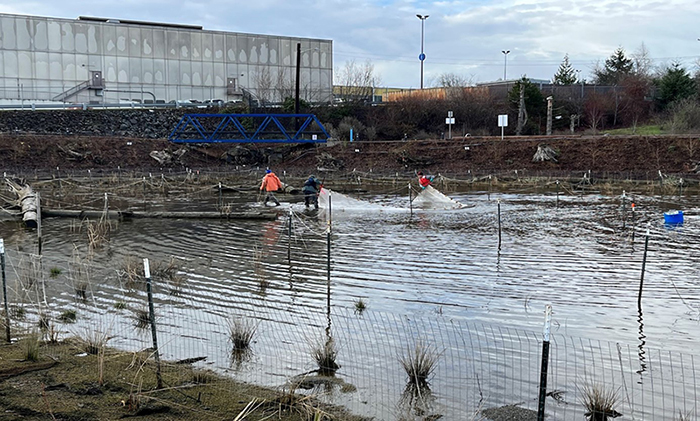
The new habitat created at DRPP has been effective, and salmon are returning “home.” The introduction of fyke netting has provided helpful insights into the use of fish habitats within the DRPP site. Over the Port’s first year of fish sampling, this technique proved highly successful in capturing 2,352 chum, 237 natural-origin Chinook, 756 shiner perch, 125 sticklebacks, and 12 sculpins.
These results hint at potential overlapping habitat preferences or feeding grounds among these species. Considering the migratory behavior of salmon, including juveniles, the presence of diverse species could also reflect their movement patterns.
Complementing these efforts, in my pilot research study at DRPP I used a 360-degree camera technique to dig deeper into fish behavior and assess the effectiveness of river restoration sites. This application of high-tech technology has returned inspiring results, even capturing the movements of juvenile salmon as they venture into the marsh area of DRPP during high tide. This innovative approach to field research, along with these discoveries, demonstrates how modern tools can provide insights into the interaction between fish and their environment, increasing scientists' understanding of salmon.

Looking ahead, the Port of Seattle remains committed to the continuous monitoring of fish presence and habitat use at DRPP. Our quest is not only to show the impact of river restoration within urban environments but also to highlight its effectiveness in bringing back important wildlife. With a positive outlook, we anticipate a continued increase in fish populations at DRPP, demonstrating the solid outcomes of the community and the Port’s dedication to ecological improvement.
In the end, DRPP isn't just a park; it's a time capsule, a connection to the past, and a canvas for the future. It's a beacon of hope and proof of what happens when humans and nature decide to work together.
Whether you're an environmental enthusiast, a history buff, or just someone looking for a moment of peace, DRPP welcomes you with open arms and a promise of awe-inspiring tales yet to unfold.


